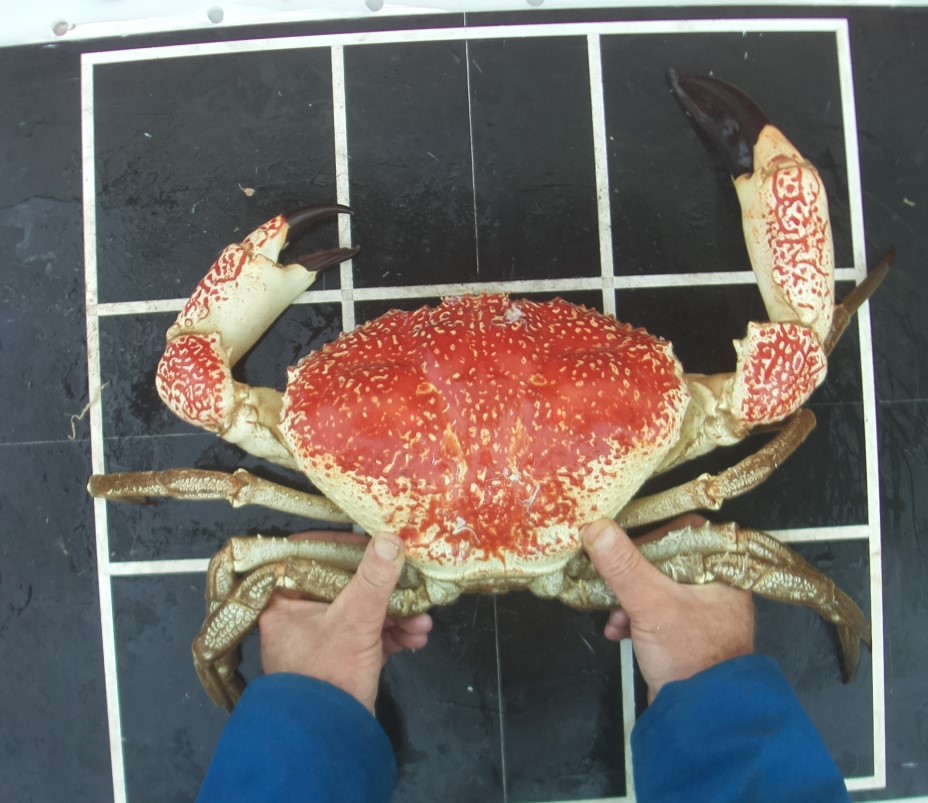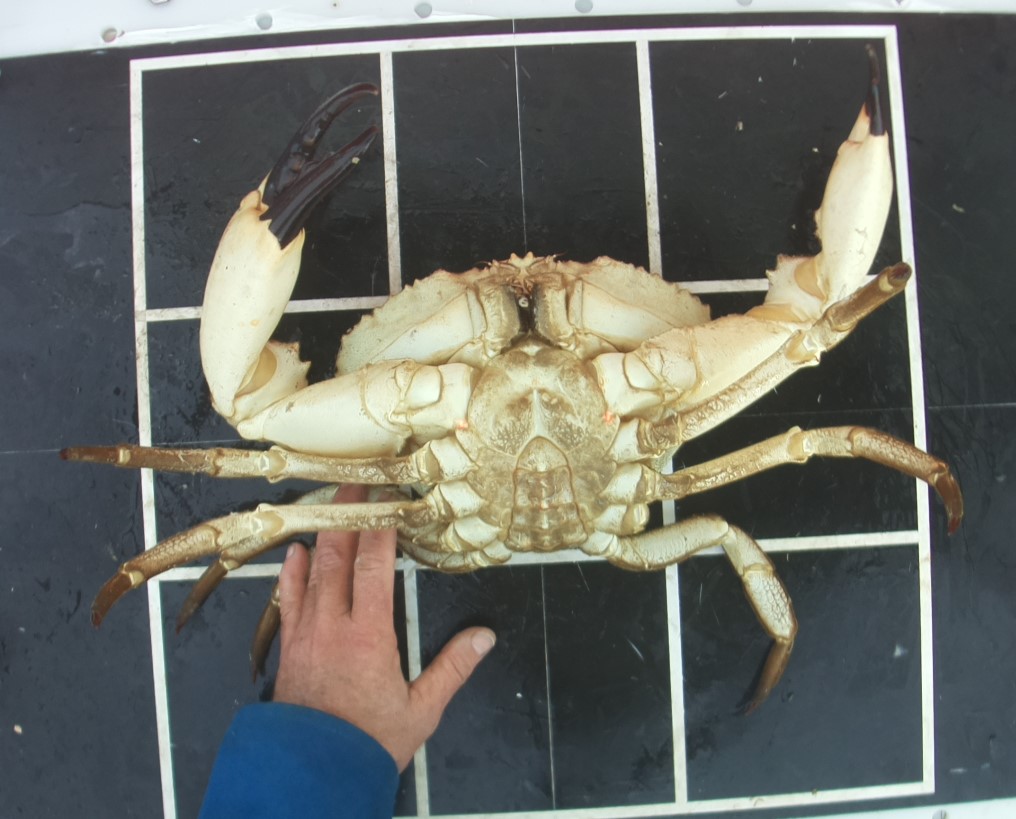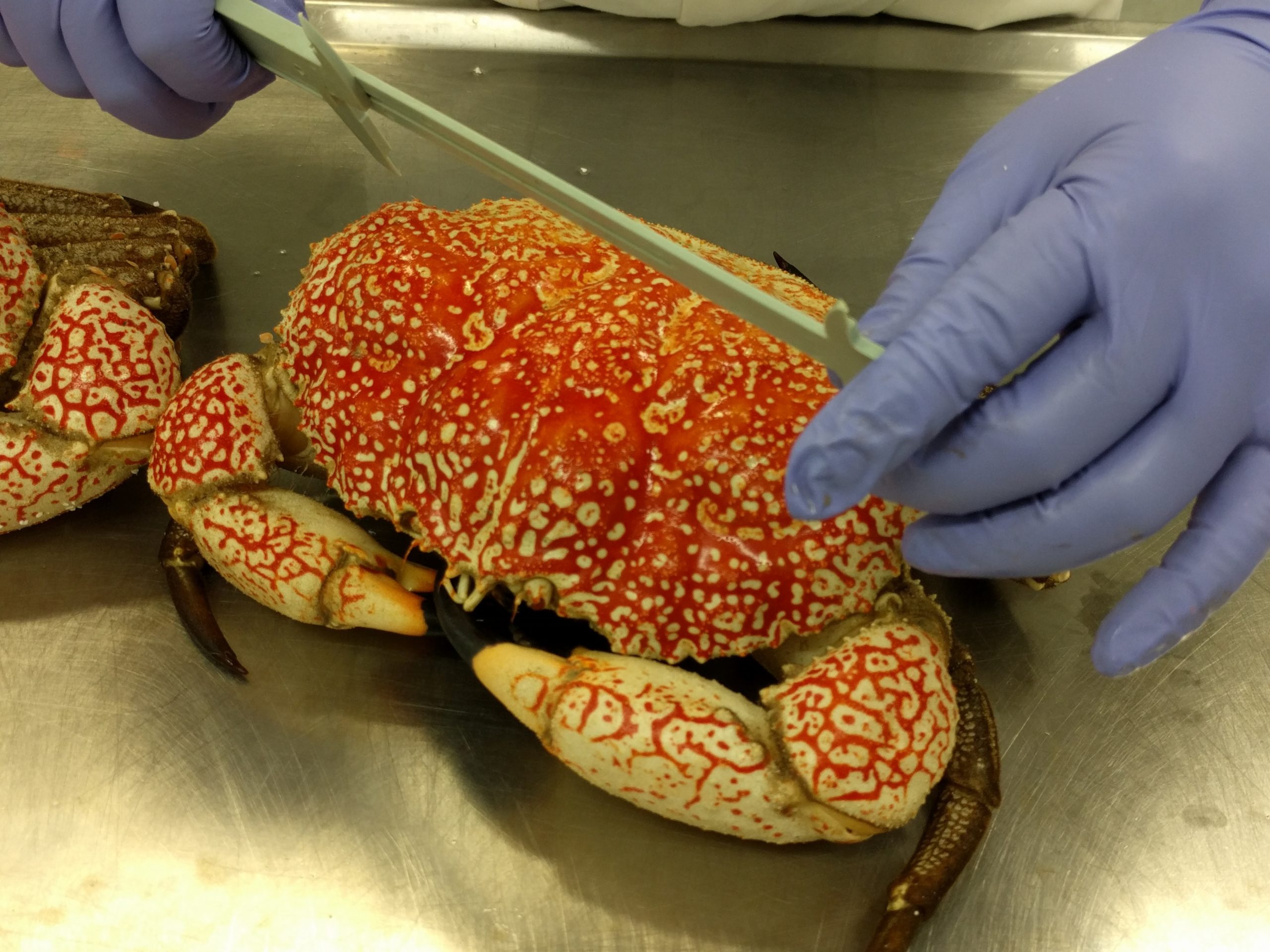Biology
The giant crab (Pseudocarcinus gigas) is one of the worlds largest crabs reaching up to 18 kg and is distributed across southern Australia (Gardner, 1997). A single population of giant crab is distributed along the edge of the continental shelf from Western Australia to southern New South Wales. Giant crabs are generally found at depths between 120 to 370 m, however, individuals can occasionally be found in shallow coastal waters. The species is long-lived with an estimated maximum age of ≥30 years.
While giant crab larvae is unlikely to disperse over vast distances, such as cross the Tasman Sea, adults have been recorded in tagging studies moving 200 – 300km (Gardner, 1998; Levings et al. 2001). Movement of giant crabs down the continental shelf into deeper, cooler water is advantageous to slow metabolism in periods of low food availability, while movement up the continental shelf may be beneficial to access improved food resources (Levings et al. 2001). Little is known about the diet of giant crabs, however, the structure of mouthparts and digestive tract indicate a carnivorous diet of slow moving or sedentary prey and from the few gut contents analyses conducted the majority of identifiable material in crabs stomachs were a single starfish species, finfish (probably carrion), mammal and bird carrion, hermit crabs, molluscs, and true crabs (Levings et al. 1996; Heeren and Mitchell, 1997).


Reproduction
Giant crab reproduce annually with a distinct seasonal pattern. Females produce eggs in April or May and carry eggs in a state known as “berried” until October or November. The capture of female giant crab that are not in berry during this time has been attributed to a proportion of the female population not carrying eggs in any year (Gardner et al. 2002). The proportion of female giant crabs not in berry is unknown as selectivity effects appear to bias sampling, that is, females who are not berried seem to be more likely to enter pots (Levings et al. 1996) and are over-represented in samples collected during winter and spring. Female giant crabs in berry carry ~1.5 million eggs on average, however, the number and size of eggs is related to the size and condition of the female (Gardner, 1997). Females provide successive broods without molting annually and can store male sperm for long periods of time (Gardner et al. 2000; Gardner, 1998).
Giant crab have a pelagic larval phase that lasts ~50 days (temperature dependent) and consists of a prezoea (hatched from egg with yolk still attached) stage, five larval stages called zoeal stages and to a megalopa stage (Gardner, 1998). The dispersal of giant crab larvae is considered to be localized due to the short planktonic phase of the giant crab lifecycle (~2 months) relative to southern rock lobster (up to 2 years). Consequently, the restricted larval dispersal is likely to result in management strategies having a direct impact on recruitment within the same jurisdiction, however, in areas with limited dispersal range, localized recruitment failure or resource depletion with fishing pressure may occur (Gardner, 1998). The dispersal, growth and survival of giant crab larvae may be influenced by numerous factors including the prevailing currents, vertical migration (movement through the depths of the water column), temperature, light intensity, gravity, change in pressure, predator pressures, food availability, thermoclines and salinity (Gardner, 1998; Gardner and Maguire, 1998; Gardner and Williams, 2004).
Growth
Growth in crustaceans is a function of both the increase in size at molt (molt increment) and the frequency of molting (intermolt duration) (Gardner et al. 2002). Information on growth is essential to the sustainable management of most fisheries, however, little information is available on the growth and size structure of giant crab in southern Australia. An across-jurisdictional tagging study in Levings et al. (2001) estimated the intermolt interval to be 3-4 years for males and females between 80-120 mm, increasing to 7 years for females and 4.5 years for males at 150 mm. However, Tasmanian giant crabs were poorly represented in the data, for example, no male giant crabs were collected in Tasmanian waters for analysis. McGarvey et al. (2002) estimated mean female intermolt using a discrete normal likelihood estimator ranged from 4.5 years for juvenile females (120 mm carapace length (CL)) to 15 years for mature females (180 mm CL). While from CT-scanning, intermolt duration was estimated at 9 years for mature size classes, with a range of 6.8 – 13.1 years at 95% confidence intervals (Gardner et al. 2002). Evidence suggests that the growth rate of giant crab is spatially variable with faster growth rates in South Australian than in Tasmania.




